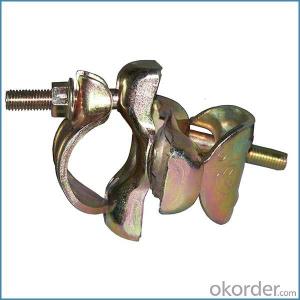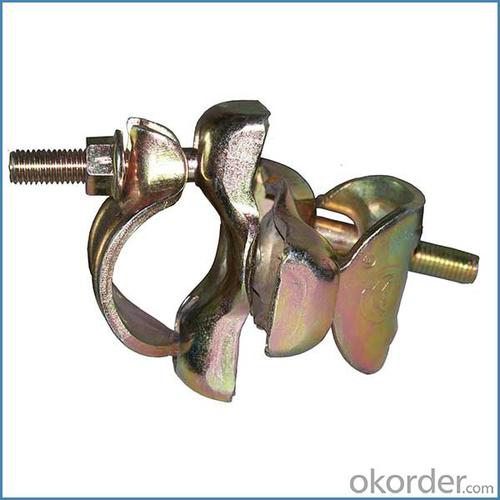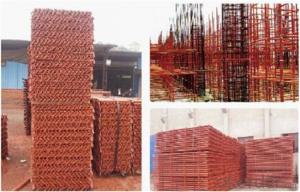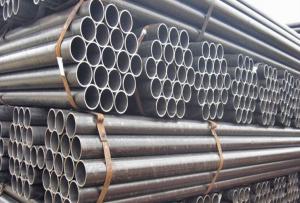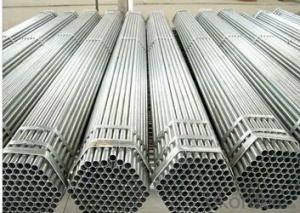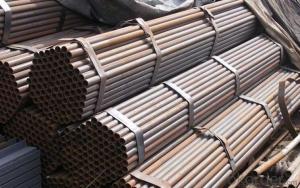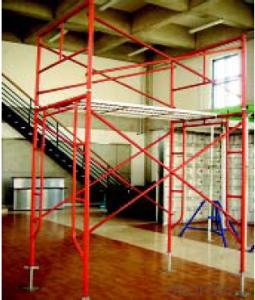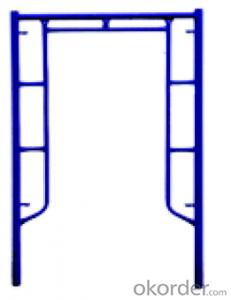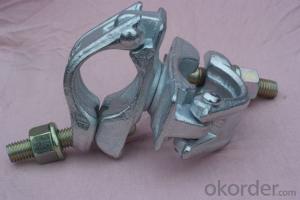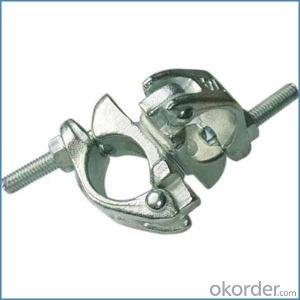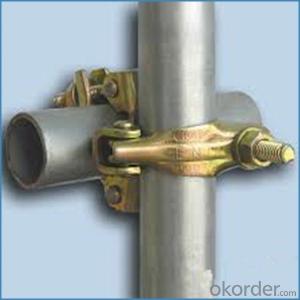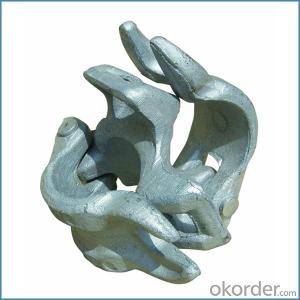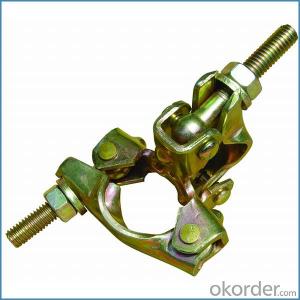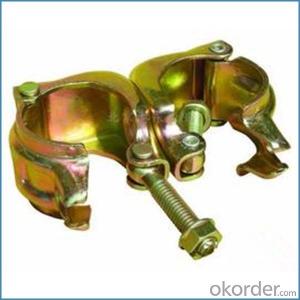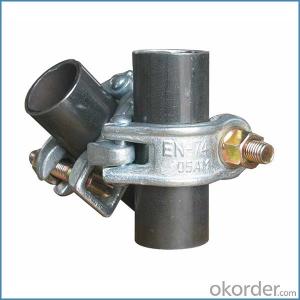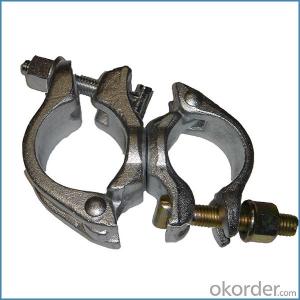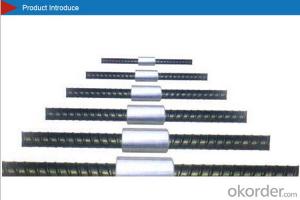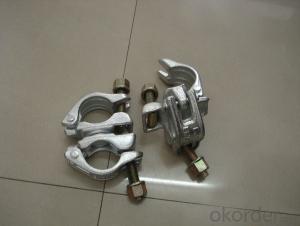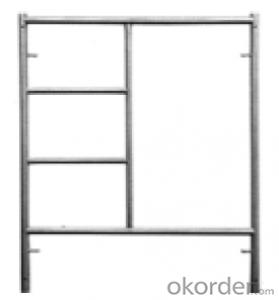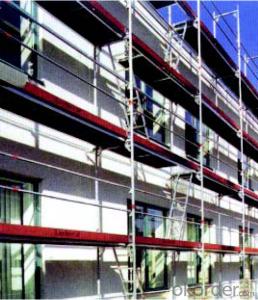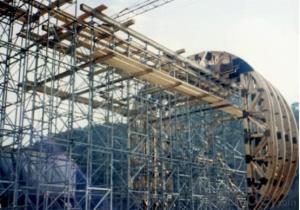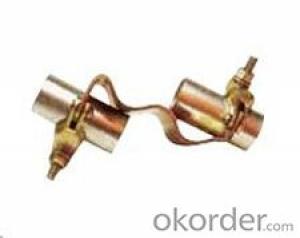Pressed Scaffolding Double Coupler British Type for Sale
- Loading Port:
- Tianjin
- Payment Terms:
- TT OR LC
- Min Order Qty:
- 1000 kg
- Supply Capability:
- 100000 kg/month
OKorder Service Pledge
OKorder Financial Service
You Might Also Like
Pressed Scaffolding Double Coupler British Type for Sale
Description
1.The scaffolding coupler is always used to connect the steel pipe as scaffolding system.
2.The often used coupler is swivel coupler and righ angle coupler .
3.We can provide types of scaffolding coupler according to your requirement.
4.Couoler can fix the 48.3mm scaffolding steel pipe tightly and make the whole scaffolding system more steadily.
5.Material:Q235 steel
6.Overall Size:48.3mm*48.3mm
7.Surface Finish: Galvanized/ Painted
8.Standard:BS1139,EN74
9.Package:25pcs/bag
10.Manufactuering as per customer requirements
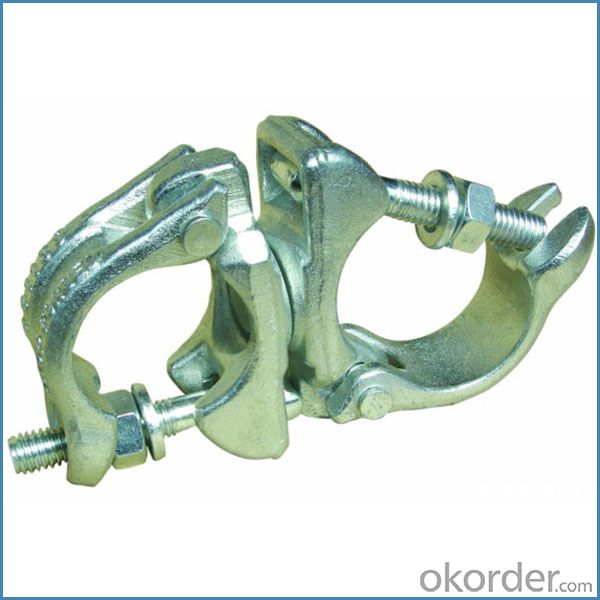
Feature
(1)Excellent Anti-Breaking—Cold Pressed Steel
(2)Outstanding Resistance Deformation
(3)Strong Anti-Dropping Ability
(4)Longtime USe
(5)Qualtity Guaranteed
(6)OEM Service
Photo
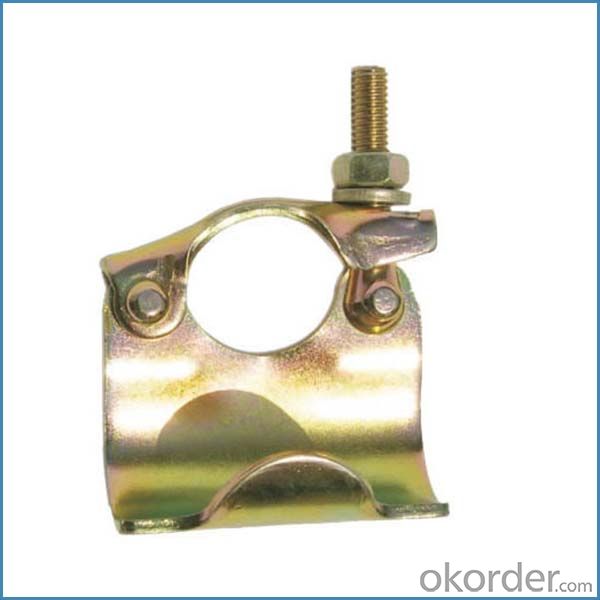
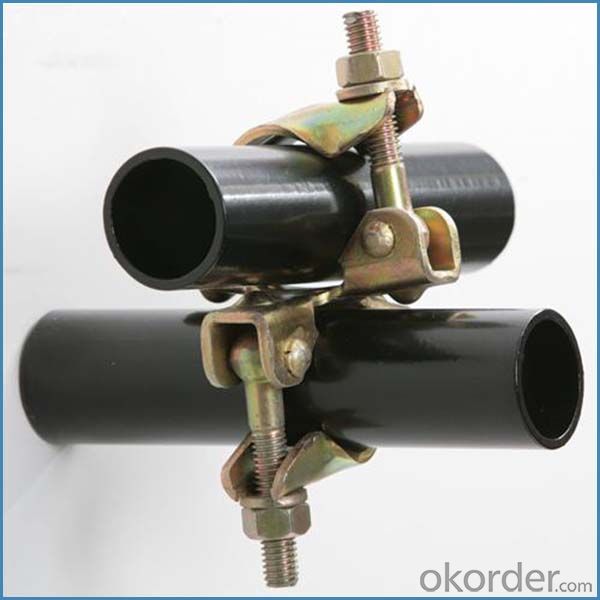
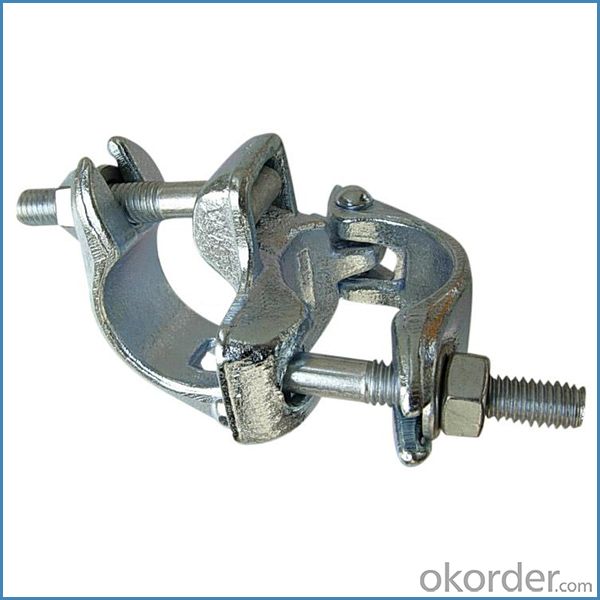
Parameter
| Material | Q235,345steel |
| Size | 48.3mm*48.3mm |
| Surface finish | Galvanized |
| Weight | 1.1kg around |
| Standard | BS1139,EN74 |
| Package | 25pcs/bag,steel pallet |
| Manufacture | As per customer requirement |
| Market | Africa, South America, the Middle East and Asia |
FAQ
Q: Are you a factory or trading company?
We are a state-owned corporation in China,dealing with various kinds of building materials.We have our holding subsidiaries.
Q: Where is your factory located? How can I visit there?
Our factory is located all around China.
Q: Can I get some samples?
Sample is free, customer only pay freight for the first time.
Q: Delivery?
10-30days. (5-15 containers)
Any question,feel free to contact us.
- Q: How do steel tube couplers ensure the stability of scaffolding joints and connections?
- Steel tube couplers ensure the stability of scaffolding joints and connections by providing a secure and reliable way to connect and fasten the tubes together. These couplers are designed to grip the tubes tightly, preventing any movement or slippage at the joints. This ensures that the scaffolding structure remains stable and can support the weight and load placed on it, providing a safe and secure working platform.
- Q: Are steel tube couplers compatible with scaffolding accessories such as platforms and guardrails?
- Yes, steel tube couplers are compatible with scaffolding accessories such as platforms and guardrails. Steel tube couplers are designed to connect steel tubes together to form a secure and stable scaffolding structure. These couplers are versatile and can be used to connect various scaffolding components, including platforms and guardrails. They provide a strong and reliable connection, ensuring the safety and stability of the scaffolding system. Therefore, steel tube couplers are highly compatible with scaffolding accessories, allowing for the easy and efficient assembly of a complete scaffolding structure.
- Q: What are the common industry standards for steel tube couplers in scaffolding?
- The common industry standards for steel tube couplers in scaffolding are typically defined by the British Standards Institution (BSI). The BSI standards that are commonly followed are BS1139 and EN 74. BS1139 is the British standard for tubes, couplers, and scaffolds. It specifies the requirements for steel tubes, fittings, and couplers used in the construction of scaffolding systems. This standard covers various aspects such as dimensions, material properties, and performance requirements for steel tube couplers. It also provides guidelines for the design, construction, and use of scaffolding systems. EN 74 is the European standard for couplers, fittings, and accessories used in the assembly of scaffolding. This standard ensures compatibility and interchangeability of components across different scaffolding systems. EN 74 specifies the dimensions, mechanical properties, and testing procedures for steel tube couplers, ensuring their strength, durability, and safety. In addition to these standards, there are also various national and international codes and regulations that govern the use of steel tube couplers in scaffolding, depending on the specific country or region. These codes may include additional requirements and guidelines to ensure the safety and reliability of scaffolding systems. It is essential for manufacturers, suppliers, and users of steel tube couplers in scaffolding to adhere to these industry standards to ensure the quality, compatibility, and safety of their scaffolding systems. Compliance with these standards helps to minimize the risk of accidents, ensure structural integrity, and maintain the overall performance and reliability of scaffolding installations.
- Q: Do steel tube couplers require any additional certification or testing for compliance with industry standards?
- Yes, steel tube couplers do require additional certification and testing to ensure compliance with industry standards. In most countries, there are specific standards and regulations that govern the design, manufacturing, and use of steel tube couplers in various industries such as construction, oil and gas, and infrastructure. These standards ensure that the couplers meet the necessary requirements for strength, durability, and safety. Certification and testing processes for steel tube couplers typically involve various steps. Firstly, manufacturers need to obtain certification from accredited testing agencies or certification bodies that specialize in evaluating compliance with industry standards. These agencies assess the couplers' design, materials, and manufacturing processes to ensure they meet the necessary requirements. Additionally, steel tube couplers may undergo rigorous testing procedures to verify their performance under various conditions. This can include tests to determine load capacity, fatigue resistance, corrosion resistance, and other relevant factors. These tests help ensure that the couplers can withstand the expected stresses and environmental conditions they will encounter in their intended applications. Compliance with industry standards and certification requirements is crucial for steel tube couplers as it assures end-users that the products they are using are reliable and safe. It helps prevent potential failures, accidents, and costly damages in various industries where these couplers are commonly employed. To summarize, steel tube couplers require additional certification and testing to comply with industry standards. This ensures that the couplers meet the necessary requirements for strength, durability, and safety, providing assurance to end-users of their reliability and performance.
- Q: Can steel tube couplers be used for creating angled or curved scaffolding structures?
- Yes, steel tube couplers can be used for creating angled or curved scaffolding structures. These couplers allow for the flexibility to connect steel tubes at various angles and create the desired shape for scaffolding structures.
- Q: How do you properly install and secure steel tube couplers on scaffolding tubes?
- In order to ensure the correct installation and secure attachment of steel tube couplers on scaffolding tubes, it is necessary to follow several steps: 1. Begin by selecting the appropriate size and type of coupler for the specific scaffolding tubes being used. It is important to confirm that the coupler has the necessary load capacity and is compatible with the diameter of the tube. 2. Clean the surface of the scaffolding tubes where the couplers will be installed. Remove any dirt, rust, or debris that could hinder proper installation or compromise the grip of the coupler. 3. Align the coupler with the tubes and slide it into the desired position. Verify that it fits tightly and does not exhibit any wobbling or movement once installed. 4. Utilize a wrench or scaffold spanner to tighten the coupler. Apply sufficient force to firmly secure the coupler onto the tubes, but be cautious not to over-tighten, as this could cause damage to the coupler or tube. 5. Verify the orientation and alignment of the coupler. Confirm that it is positioned correctly and aligned perpendicular to the scaffolding tubes, as this will provide optimal stability and support. 6. Inspect the coupler for any indications of damage or wear. If any defects are identified, promptly replace the coupler to maintain the structural integrity of the scaffolding. 7. Once all couplers are installed, double-check their tightness and overall stability. Confirm that they are securely fastened and capable of withstanding the intended load capacity without any movement or slippage. 8. Regularly inspect the couplers during scaffold usage, particularly after any impact or changes in load. Look for any signs of loosening or damage and address them immediately to prevent accidents and ensure the safety of workers. Always remember that proper installation and secure attachment of steel tube couplers are vital for the stability and safety of scaffolding structures. It is important to adhere to the guidelines provided by the manufacturer and seek guidance from experienced professionals if necessary.
- Q: Please give me an explanation about scaffolds and what they are. Everything given is very appreciated. Thank you very much.
- Tissue engineering is the use of a combination of cells, engineering and materials methods, and suitable biochemical and physio-chemical factors to improve or replace biological functions. While it was once categorized as a sub-field of bio materials, having grown in scope and importance it can be considered as a field in its own right. While most definitions of tissue engineering cover a broad range of applications, in practice the term is closely associated with applications that repair or replace portions of or whole tissues (i.e., bone, cartilage, blood vessels, bladder, skin, muscle etc.). Often, the tissues involved require certain mechanical and structural properties for proper functioning. The term has also been applied to efforts to perform specific biochemical functions using cells within an artificially-created support system (e.g. an artificial pancreas, or a bio artificial liver). The term regenerative medicine is often used synonymously with tissue engineering, although those involved in regenerative medicine place more emphasis on the use of stem cells to produce tissues.
- Q: Are steel tube couplers resistant to impact or accidental damage during scaffolding use?
- Yes, steel tube couplers are generally resistant to impact and accidental damage during scaffolding use due to their robust construction and high strength properties.
- Q: What are the common methods of connecting steel tube couplers to scaffolding tubes?
- There are several common methods for connecting steel tube couplers to scaffolding tubes. One of the most widely used methods is the swivel coupler, which consists of a central bolt that allows the coupler to rotate and connect two tubes at any angle. This type of coupler is often used to create angles or corners in scaffolding structures. Another common method is the double coupler, which is used to connect two tubes parallel to each other. It typically features two bolts that secure the coupler tightly to the tubes, providing a strong and stable connection. Furthermore, there is the sleeve coupler, which is used to connect two tubes end-to-end. It consists of two halves that are bolted together around the tubes, creating a secure and rigid connection. Lastly, the putlog coupler is used to connect scaffolding tubes to walls or other vertical surfaces. It features a single bolt that attaches the coupler to the tube, providing a reliable attachment point. These methods of connecting steel tube couplers to scaffolding tubes are widely used in the construction industry and ensure the stability and safety of scaffolding structures. It is important to follow proper techniques and guidelines when using these couplers to ensure a strong and secure connection.
- Q: Can steel tube couplers be used to create angled connections in scaffolding?
- Yes, steel tube couplers can be used to create angled connections in scaffolding. Steel tube couplers are designed to connect and secure steel tubes together, providing a strong and reliable connection. They can be used to create various angles and configurations in scaffolding, allowing for flexibility and adaptability in construction projects. Whether it is for creating diagonal braces, cantilevered platforms, or other angled structures, steel tube couplers are an essential component in scaffolding systems.
Send your message to us
Pressed Scaffolding Double Coupler British Type for Sale
- Loading Port:
- Tianjin
- Payment Terms:
- TT OR LC
- Min Order Qty:
- 1000 kg
- Supply Capability:
- 100000 kg/month
OKorder Service Pledge
OKorder Financial Service
Similar products
Hot products
Hot Searches
